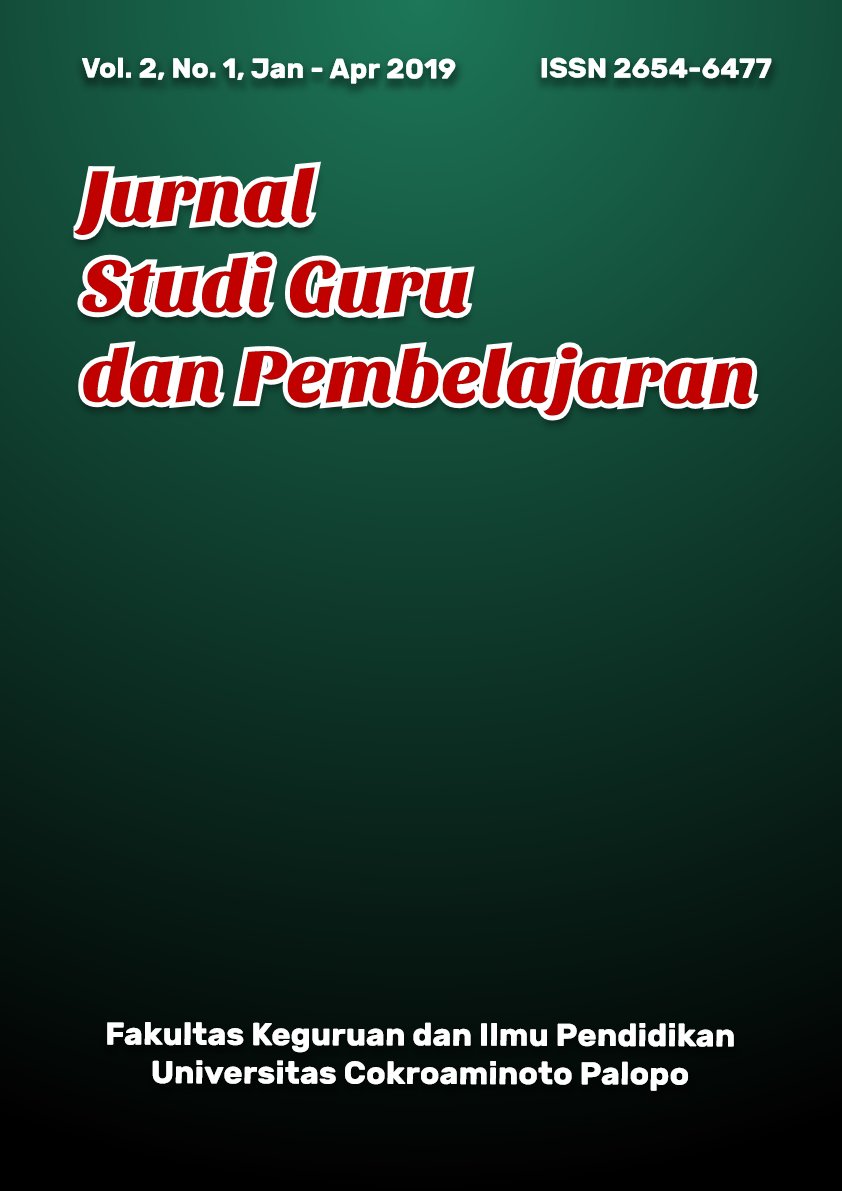An Evaluation of English Language Textbook: Interlanguage English for Senior High School Students
DOI:
https://doi.org/10.30605/jsgp.2.1.2019.26Keywords:
textbook analysis, interlanguage, evaluation, english textbook, senior high schoolAbstract
English Language Teaching (ELT) textbooks serve as the basis for many language inputs that learners receive and language practices that occur in the classroom. They may provide the basis for ideas and instructional activities as well as giving teachers rationales for what they do. The objective of this analysis is to know about how much a textbook meets the requirements of a good EFL textbook. The evaluation checklist used in this paper is the modification of Cunningsworth’s (1995) checklist developed by Al-sowat (2012). There are nine issues of textbook evaluating in this checklist: (1) layout and physical appearance; (2) content; (3) objectives; (4) language type; (5) skills; (6) activities and tasks; (7) structure and vocabulary; (8) culture values; and (9) teacher's needs.
Downloads
References
Al-sowat, H. (2012). An Evaluation of English Language Textbook "Say It In English" For First Year Intermediate Grade in Saudi Arabia. Journal of Studies in Curriculum and Supervision, 3(2). Retrieved from http://uqu.edu.sa/files2/tiny_mce/plugins/filemanager/files/4280212/GES3-2-5.pdf
Awasthi, J. R. (2006). Textbook and Its Evaluation. (Online). Vol.11 No. 1-2. (www.nelta.org.np)
Cunningsworth, A. (1995). Choosing Your Coursebook. Oxford: The Bath Press.
Park, E. (2004). A Study on English Textbook Used in a Technical High School: Issues in EFL. TEFLIN Journal, 3.
Downloads
Published
How to Cite
Issue
Section
License
In submitting the manuscript to the journal, the authors certify that:
- They are authorized by their co-authors to enter into these arrangements.
- The work described has not been formally published before, except in the form of an abstract or as part of a published lecture, review, thesis, or overlay journal.
- That it is not under consideration for publication elsewhere,
- That its publication has been approved by all the author(s) and by the responsible authorities – tacitly or explicitly – of the institutes where the work has been carried out.
- They secure the right to reproduce any material that has already been published or copyrighted elsewhere.
- They agree to the following license and copyright agreement.
License and Copyright Agreement
Authors who publish with JSGP agree to the following terms:
- Authors retain copyright and grant the journal right of first publication with the work simultaneously licensed under Creative Commons Attribution License (CC BY-SA 4.0) that allows others to share the work with an acknowledgement of the work's authorship and initial publication in this journal.
- Authors are able to enter into separate, additional contractual arrangements for the non-exclusive distribution of the journal's published version of the work (e.g., post it to an institutional repository or publish it in a book), with an acknowledgement of its initial publication in this journal.
- Authors are permitted and encouraged to post their work online (e.g., in institutional repositories or on their website) prior to and during the submission process, as it can lead to productive exchanges, as well as earlier and greater citation of published work.














